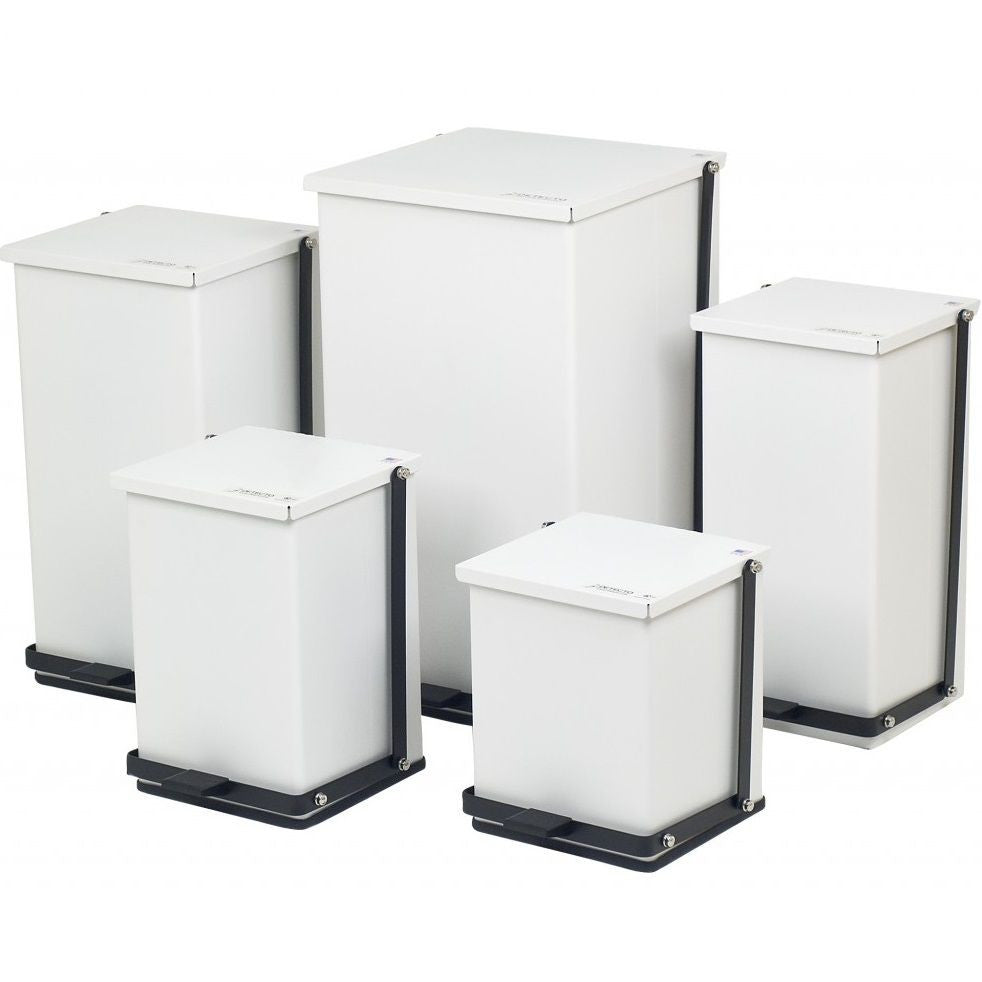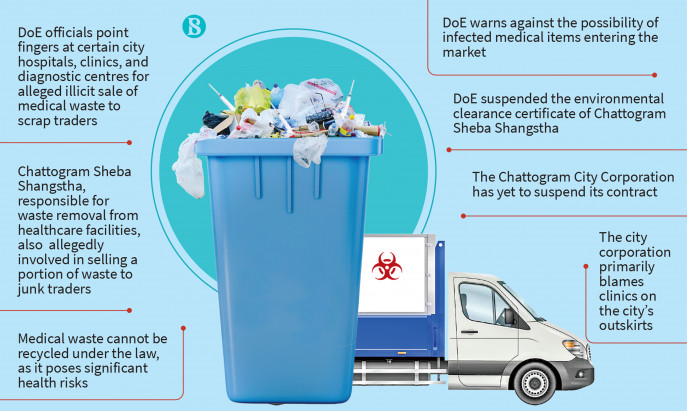Beyond Cleanup: Ensuring Safety And Security with Expert Medical Waste Removal
Beyond Cleanup: Ensuring Safety And Security with Expert Medical Waste Removal
Blog Article
Efficient and Eco-friendly Medical Garbage Disposal Solutions
In the ever-evolving area of healthcare, the issue of medical waste disposal continues to be a subject of critical significance. As health centers, facilities, and other health care centers make every effort to offer high quality person treatment, they have to also attend to the obstacle of efficiently and responsibly disposing of their waste - medical waste removal. In an age where ecological sustainability goes to the leading edge of public awareness, finding remedies that are both reliable and environmentally friendly is not just an issue of compliance but also a testimony to the commitment of medical care establishments towards a greener future. From waste partition practices to cutting-edge reusing initiatives, this discussion will check out the different approaches utilized to tackle this pushing concern, leaving you interested and excited to discover the potential remedies that lie in advance.
Waste Partition Practices
Efficient waste partition methods are necessary to guarantee the proper and safe disposal of clinical waste. Clinical waste, that includes materials contaminated with possibly transmittable materials, must be taken care of in a means that minimizes the threat of injury to both public health and wellness and the environment. Correct waste partition plays a critical duty in accomplishing this goal.
Waste segregation involves the splitting up of various sorts of waste based upon their qualities and potential threats. This procedure ensures that each kind of waste is treated and thrown away appropriately (medical waste disposal services with WasteX). It begins at the point of generation, where healthcare facilities should have marked bins and containers for various waste classifications, such as sharps, infectious waste, pharmaceutical waste, and non-hazardous waste
By segregating clinical waste at the source, doctor can stop cross-contamination and reduce the danger of direct exposure to contagious agents. This method additionally assists in the recycling and healing of particular products. Segregating and reusing clean plastics and glass minimizes the need for raw products and reduces the ecological influence of medical waste disposal.

Autoclaving and Sterilization Techniques
In order to make certain the correct and risk-free disposal of medical waste complying with reliable waste segregation methods, health care facilities need to utilize autoclaving and sterilization methods. Autoclaving is a commonly used method that uses high-pressure heavy steam to sanitize medical waste. This process involves putting the waste in a chamber and subjecting it to a combination of heat and stress, which effectively eliminates microbes and renders the waste safe for disposal. Autoclaving is particularly efficient in decontaminating things such as surgical instruments, lab equipment, and specific kinds of clinical waste that can hold up against heats. medical waste disposal services with WasteX.
An additional generally made use of sterilization method is chemical sanitation. This entails dealing with the waste with chemicals such as ethylene oxide or hydrogen peroxide, which kill microbes by disrupting their mobile framework. Chemical sterilization is typically made use of for heat-sensitive things or products that can not endure the heats of autoclaving. Nevertheless, it is important to note that chemical sterilization requires proper handling and disposal of the chemicals used, as they can be unsafe to human health and wellness and the setting if not taken care of correctly.
On-Site Waste Therapy Equipments
Medical care centers have executed on-site waste therapy systems to attend to the disposal of clinical waste in a risk-free and effective manner. These systems supply a affordable and practical solution for explanation taking care of medical waste created within the facility. On-site waste therapy systems use various innovations to treat and get rid of of medical waste on-site, lessening the demand for transportation to off-site centers.
One commonly utilized on-site waste treatment system is the microwave technology. Another system is the chemical sanitation modern technology, which includes dealing with medical waste with chemicals to eliminate microorganisms and decrease its harmful nature. medical waste disposal services with WasteX.
They remove the risk of medical waste being messed up throughout transport, reducing the capacity for contamination and exposure to dangerous substances. On-site therapy systems reduce the total ecological impact of medical waste by minimizing transport and the need for landfill room.
Recycling and Repurposing Initiatives
As healthcare facilities pursue lasting waste administration methods, they are significantly exploring recycling and repurposing initiatives as a way of decreasing the ecological effect of medical waste. Reusing and repurposing initiatives involve locating ingenious means to reuse or transform clinical waste into brand-new items or products. This not just aids to minimize the volume of waste that winds up in land fills or burners yet additionally minimizes the usage of basic materials and power required for producing new items.
One instance of reusing in the health care market is the reprocessing of single-use medical tools. This not only minimizes the amount of waste created however also saves medical care centers substantial costs connected with purchasing brand-new tools.
Another recycling initiative entails the recycling of plastic containers, such as medicine bottles or syringe coverings. These containers can be accumulated, arranged, and sent out to read what he said reusing facilities where they are refined, melted down, and changed right into new plastic products. This helps to save resources and decrease the need for virgin plastic manufacturing.
In addition to reusing, repurposing initiatives involve finding alternate usages for clinical waste. Shredded paper waste from medical records or packaging materials can be repurposed as bedding product for animals or as insulation product. Organic waste such as food scraps from health care facilities can be composted and made use of as plant food in gardens or farming areas.

Renewable Energy Solutions
One effective approach to reducing the ecological impact of health care procedures involves carrying out sustainable energy options. Healthcare facilities, such as healthcare facilities and facilities, consume substantial quantities of energy for various objectives, consisting of lighting, home heating, air conditioning, and operating clinical tools. By transitioning to sustainable energy sources, these facilities can substantially minimize their carbon footprint and add to a much more lasting future.

Carrying out renewable resource remedies in health care centers not only minimizes greenhouse gas exhausts however also provides long-lasting cost savings. While the first financial investment in renewable energy facilities might be greater, the long-term operational prices of renewable resource systems are dramatically lower contrasted to typical fossil fuel-based power resources. In addition, renewable resource systems are dependable and can offer a uninterrupted and stable power supply, ensuring continuous medical care services even throughout power interruptions or emergency situations.
Conclusion
In verdict, implementing ecologically pleasant and effective clinical waste disposal solutions is necessary for preserving a sustainable medical care system. By adopting waste segregation practices, autoclaving and sterilization techniques, on-site waste treatment systems, recycling and repurposing initiatives, and renewable resource options, healthcare centers can substantially lower their environmental effect. These procedures not only shield the environment however likewise promote public health and wellness and safety. Therefore, it is crucial for medical care companies to focus on the application of these lasting waste disposal methods.
It begins at the factor of generation, where medical care facilities ought to have assigned containers and containers for various waste categories, such as sharps, infectious waste, pharmaceutical waste, and non-hazardous waste.
In order to make certain the appropriate and safe disposal of clinical waste following effective waste segregation practices, medical care facilities should use autoclaving and sanitation methods.Healthcare facilities have executed on-site waste treatment systems to address the disposal of medical waste in a effective and secure way. On-site waste therapy systems utilize different modern technologies to dispose and treat of clinical waste on-site, lessening the demand for transportation to off-site centers.
As healthcare facilities make every effort for sustainable waste management techniques, they are increasingly discovering recycling and repurposing efforts as a way of reducing the ecological influence of clinical waste. - medical waste removal
Report this page